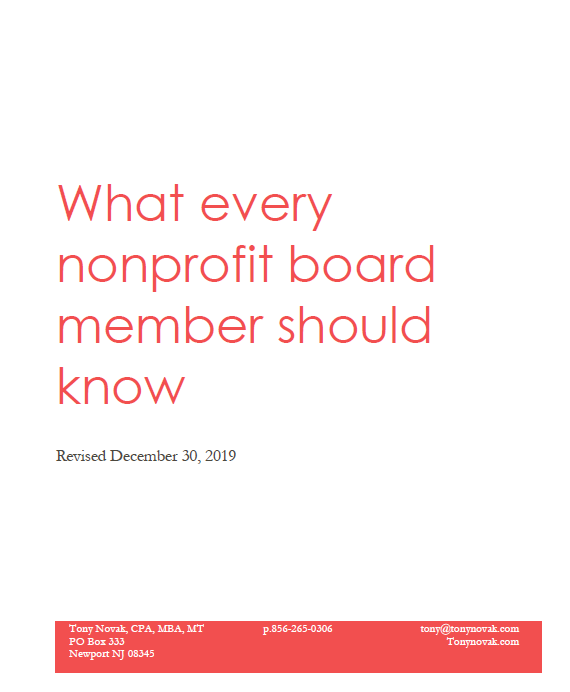
So you’ve been asked to serve on the board of a nonprofit organization. What do you need to know? You want to learn enough about the organization to do a good job as a director. You should also understand that there is potential legal liability for serving as a board member. Since nonprofit organizations do not have owners or shareholders, directors are responsible for the actions of the organization.
This post assumes that you are familiar with the terms used in the documents below and that you can read and understand financial statements. If not, don’t worry, you will likely pick it up quickly. But be sure to seek out other help with these business skills if you feel that you need it and that the topics still seem foreign after a few months.
First, we suggest that all board members of all nonprofit organizations should read the current version of the following:
- Articles of incorporation or association
- Organization’s bylaws
- Any amendments to either the articles of incorporation or the bylaws
- Recent board meeting minutes
- A list of the current officers , directors, committees and their chairpersons
- The IRS tax-exempt determination letter
- Latest tax return
- Most recent financial statements and accountant’s report
- State charities registration filing, if applicable
- Mission statement
- Organization’s web site
- Conflict of interest policies for board members
- Directors and officers liability insurance policy
- Insurance summary of the organization
It might seem like a lot, but well-managed nonprofit organizations should have this information easily available. I suggest that an online shared file directory (like Google Drive or OneDrive) is the most practical way to manage and share this information. The group’s accountant and attorney should have their own copy of each key document.
Discuss any item that isn’t clear or does not make sense. At this point you’ll be ready to serve as a strong position to serve as a well-informed board member for your organization.
Next, you’ll want to take a quick look at the board’s financial statement. Does it even exist? Does it look reasonably accurate? What are the organizations financial controls and how are they working? At minimum, you’ll want to see that the bank statement has the same amount of cash as the financial statement says. We are amazed at how many organizations have statements that fail this simple test yet often nobody even notices.
What next? That may depend on your role and your organization. For more information on improving performance of nonprofit organizations, request a copy of my booklet “What every nonprofit board member should know”. It is free to officers and directors of nonprofit organizations.
I also offer ‘in person’ informal and prepared presentations on training topics for nonprofit board members.


Leave a Reply